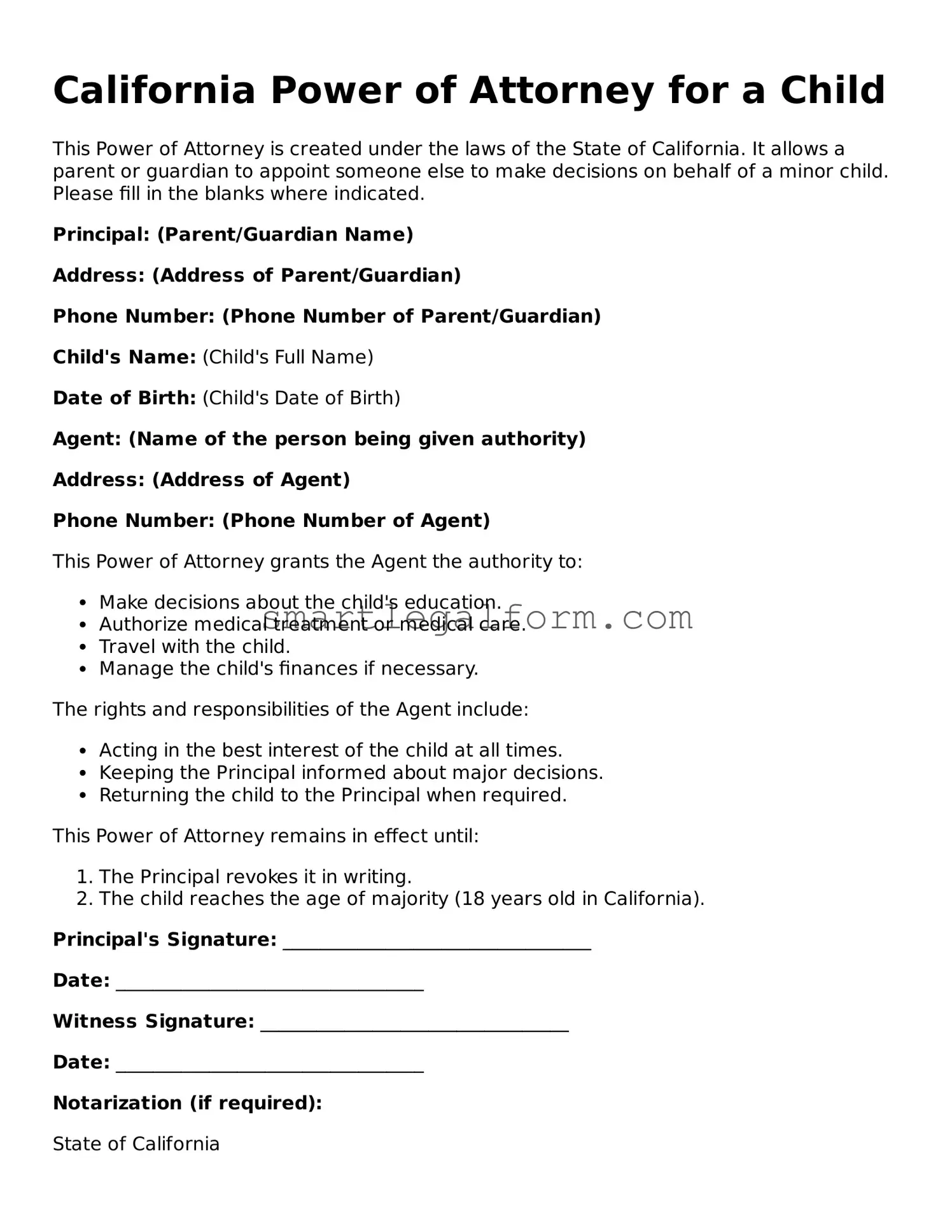California Power of Attorney for a Child
This Power of Attorney is created under the laws of the State of California. It allows a parent or guardian to appoint someone else to make decisions on behalf of a minor child. Please fill in the blanks where indicated.
Principal: (Parent/Guardian Name)
Address: (Address of Parent/Guardian)
Phone Number: (Phone Number of Parent/Guardian)
Child's Name: (Child's Full Name)
Date of Birth: (Child's Date of Birth)
Agent: (Name of the person being given authority)
Address: (Address of Agent)
Phone Number: (Phone Number of Agent)
This Power of Attorney grants the Agent the authority to:
- Make decisions about the child's education.
- Authorize medical treatment or medical care.
- Travel with the child.
- Manage the child's finances if necessary.
The rights and responsibilities of the Agent include:
- Acting in the best interest of the child at all times.
- Keeping the Principal informed about major decisions.
- Returning the child to the Principal when required.
This Power of Attorney remains in effect until:
- The Principal revokes it in writing.
- The child reaches the age of majority (18 years old in California).
Principal's Signature: _________________________________
Date: _________________________________
Witness Signature: _________________________________
Date: _________________________________
Notarization (if required):
State of California
County of _________________________________
Subscribed and sworn to before me on this ______ day of __________, 20__ by _________________________________.
Notary Public Signature: _________________________________
My Commission Expires: _________________________________
